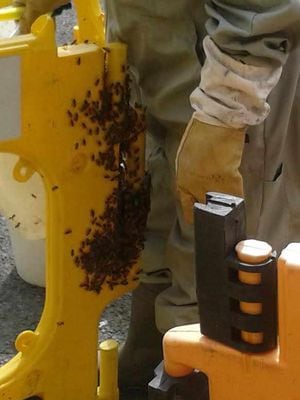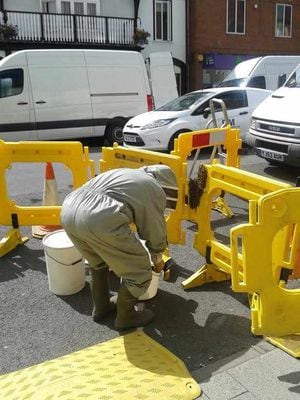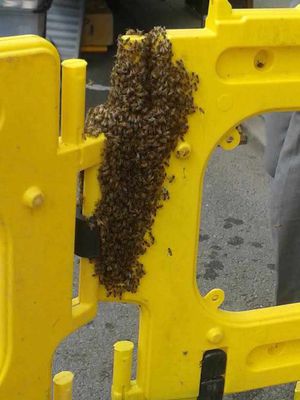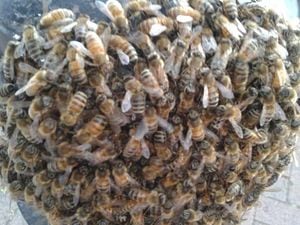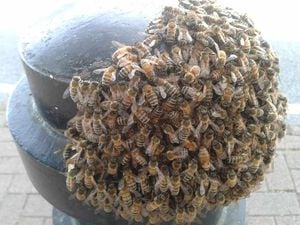Bee-ware as swarm homes in on barrier
A town centre became a hive of activity – after thousands of bees set up home on a set of roadworks.
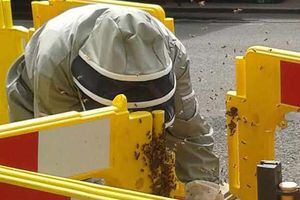
Broad Street in Newtown came to a standstill after the bees landed on a bright yellow barrier around the works.
The workers had to stop what they were doing to allow the swarm to be taken away by a mystery beekeeper, who stepped in to take them away.
Councillor Joy Jones, who witnessed the swarm, said: "It was quite an incredible sight .
"It was a busy market day and the bees literally came swarming into Broad Street.
"They took up home on the bright yellow barriers around the street works and caused great excitement from passers-by.
" A crowd built up as everyone waited for someone to come and remove them and take them away to a safe place.
"They must have been attracted to the bright yellow of the barriers and there were actually hundreds of them all together there.
"It is not the first swarm we have had in the town recently either - there was another spotted in Llanidloes Road recently too."
Keith Rimmer, secretary of the Montgomeryshire Beekeeper's Association, said there are more swarms of bees than people realise.
He said: "Powys County Council rang to see if we could sort it out as it was deemed to be a danger to the public.
"In between the initial call and a follow up call from the council an unknown beekeeper attended and wandered off with couple of buckets of bees then returned to scoop up the rest.
"It is amazing really, there must be loads of swarms people don't even know have left their hives, far far more than we realise.
"Whoever the beekeeper is, they did their good deed of the day by helping out there."
The British Beekeepers Association said honeybees swarm because they are looking for a site to form a new colony and it is a natural means of population increase.
Each swarm contains a queen bee and up to 20,000 worker bees.
Wasps and bumblebees do not swarm, so any large groupings of insects are almost certainly honeybees.
The swarming season is from April to July, but the peak is from early May to mid June and swarms are not dangerous unless disturbed or aggravated.
Because they only rarely survive in the wild, honeybee swarms need to be captured by trained personnel/beekeepers and placed in beehives.
It has been a good year for honeybees because of the mild winter.
The insects are currently at their busiest and will travel several miles in search of nectar before returning to the swarm.
